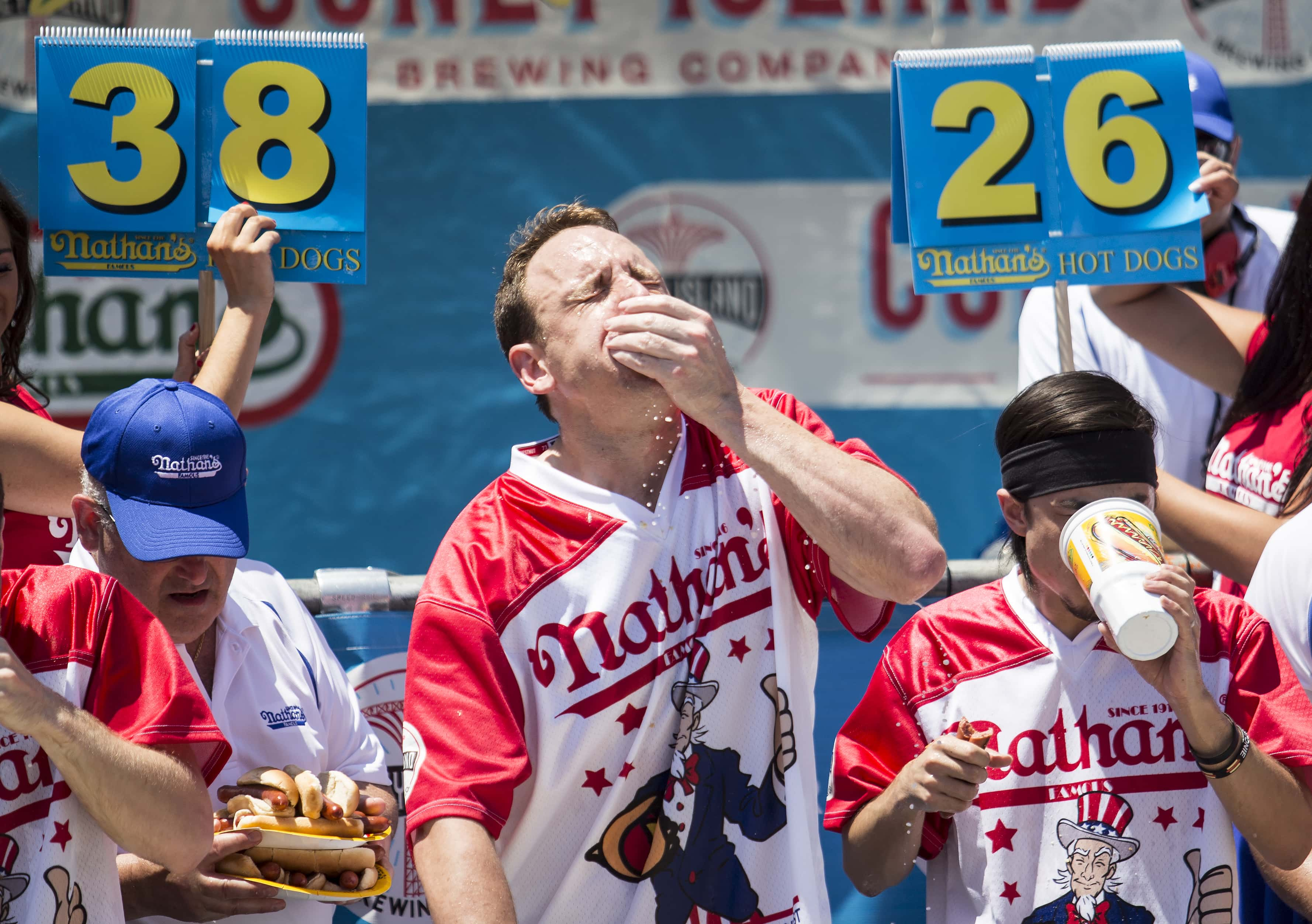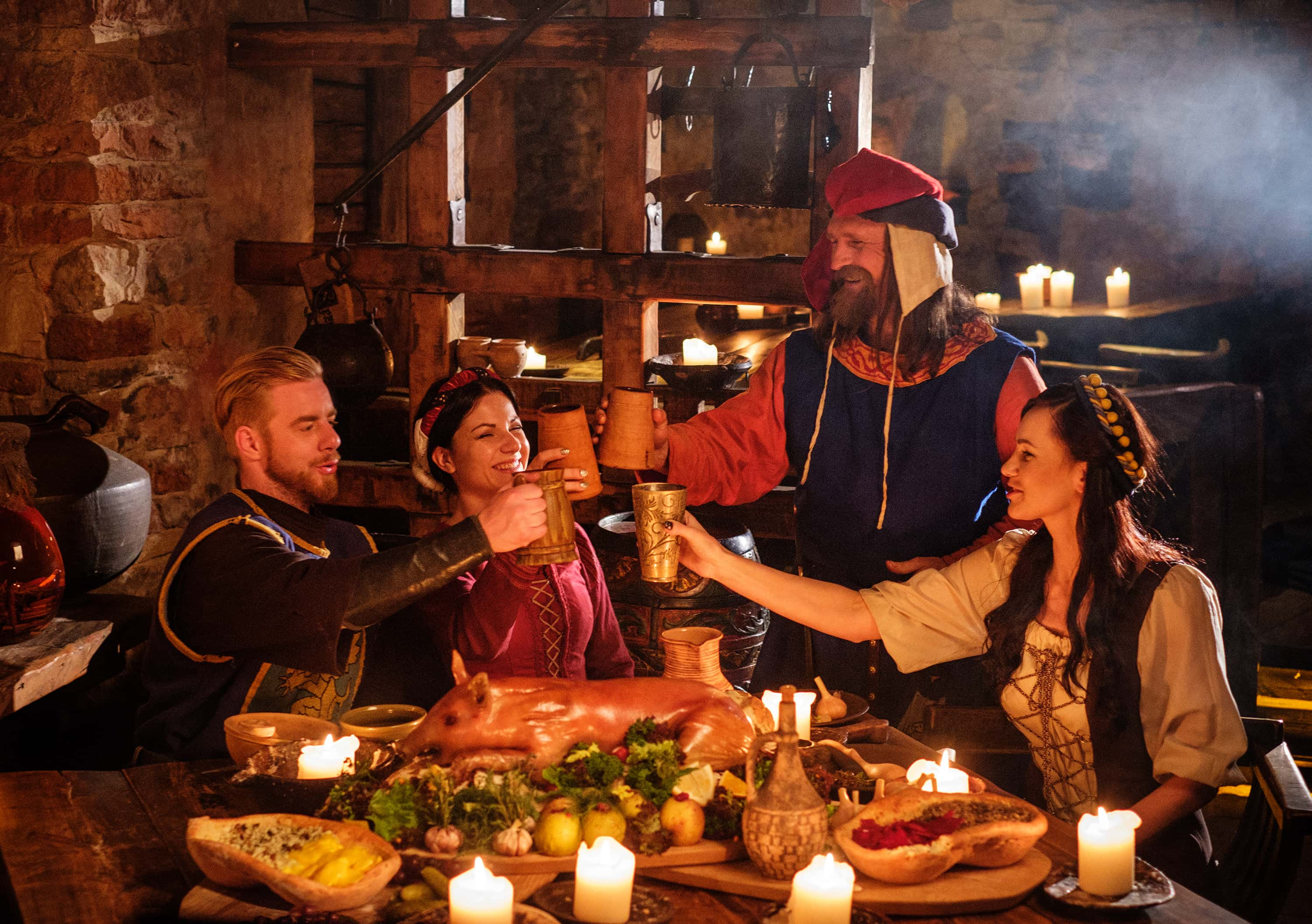Nothing represents late capitalism quite like competitive eating contests. We most often associate the gluttonous revels with county fairs; chaotic and crude events where slouching contestants line up in front of plastic gingham tablecloths and paper plates piled high with hot dogs. Meanwhile, the legs of the picnic tables groan under the weight of the outsized meal.
Competitive eating events like Nathan’s Hot Dog Eating Contest have even gained worldwide renown. In them, famous eating names like Takeru Kobayashi and Joey Chestnut feast it out for gastronomic glory. As the audience looks on, they’ll see a sopping, bursting vision of abundance—or maybe excess would be more accurate, as many hopefuls vomit up most of what they’ve put down. It’s every man for himself, and as long as contestants keep food down during and just after the event, almost anything goes.

Fueled by individualism, gluttony, and glory, competitive eating seems like an invention of modernity. Yet nothing could be further from the truth. Not only did intentional overeating exist all the way back in 17th-century England, the practice also had its own celebrity: The Great Eater of Kent.
A Titan of His Time
Obviously, you don’t earn the name “The Great Eater of Kent” by following a strict diet of leafy vegetables and grilled chicken. Born Nicholas Wood in the 1580s, the gorger gained a reputation around his local county of Kent, England for being a frighteningly voracious eater. When the poet John Taylor first saw Wood sitting at an inn table, he looked on in horror as the insatiable man put away 60 eggs, ample cuts of lamb, and a few pies for good measure, all without breaking a sweat.
Taylor soon found out that Wood—a big, burly farmer by trade—was notorious for his eating feats. In fact, he sometimes performed his “work” at festivals and public gatherings. Tales of Wood eating 84 rabbits in one go or wolfing down a dinner for eight all by himself were abound. He also liked making extraordinary bets about how much he could pack away, and only lost on two recorded occasions. One tussle with an unknown meal put him in a literal food coma, while another bet forced him to eat 12 loaves of bread soaked in ale; he drunkenly passed out halfway through.

Thoroughly amazed at these tales and what he’d seen with his own eyes, Taylor did what many would do: he tried to monetize it. In fact, most of what we know about Wood comes from Taylor’s incredibly-named The Great Eater, of Kent, or Part of the Admirable Teeth and Stomach Exploits of Nicholas Wood, which was designed as a pamphlet for an “eating exhibition” in which the poet wanted Wood to star. In exchange, Taylor would give the Great Eater a cut of the profits, plus lodging in London—and, of course, copious amounts of foodstuffs.
Dangling the Carrot
In Taylor’s plan, Wood would perform at London’s Bear Gardens and run through a giant’s tasting menu of delicacies like an entire, fattened calf, puddings that could span the Thames, and even a wheelbarrow full of tripe. Though this all sounds like the very definition of “too much,” Taylor fervently believed in the Great Eater. In his tribute to Wood, he brazenly crowns him as an equal of both Alexander the Great and Charlemagne, dubbing him “Nick the Great,” “Duke All-Paunch,” and the “Kentish Tenterbelly.”
Taylor’s dreams were as big as Wood’s stomach, but they sadly never came to pass. By the time Taylor met him, the so-called Great Eater of Kent was in his twilight years and showing some significant wear and tear. Probably the most prohibitive fact of all was that, bizarrely, he only had one tooth left after a gnarly battle with a mutton shoulder had cracked all his other chompers in one fell swoop.
Since Wood was pretty sure teeth were an essential part of eating, he declined, and wider audiences were forever denied the opportunity to witness his baroque gastronomic feats.
The Cherry on Top
After this missed opportunity for stardom, The Great Eater of Kent slips away from history and into obscurity. Some accounts even claim that he simply left Taylor’s house one day, and never to be seen again. Whatever the truth, by 1630, Nicholas Wood had certainly died in poverty.
It was a small end for a giant man, but despite history’s best efforts, Wood has not been forgotten. As one of the earliest known examples of a competitive eater, if not the earliest example, we might consider Wood (with an assist from Taylor) the inventor of eating competitions.
So every time you smell a whiff of mustard in the carnival air or hear the cheers of the crowd as someone digs into a nice, creamy bucket of coleslaw, think of The Great Eater of Kent.